The 2021 UEFA U-21 Euros featured a clash between old foes Germany and the Netherlands. Both the teams have some exciting youngsters in their rank and are definite favourites to lift the trophy in May. Germany came into this clash after a resounding 3-0 victory against Hungary while the Netherlands struggled in their last outing and settled for a draw against Romania.
The tactical analysis features the tactics deployed by both the teams and how they cancelled out each other to settle for a draw. Let’s begin the analysis and see which of these sides could be considered favourites in the eyes the bookies –
see here a list with trusted sites where you can find the very best odds.Lineups
Germany made one change to the lineup that beat Hungary in their last game. Full-back Ismail Jakobs was drafted into the lineup for David Raum as they pretty much looked to retain the same chemistry that started their tournament with a bang. The Netherlands, meanwhile made 3 changes to their lineup and they also went with different tactics and setup for this game that will be discussed later.
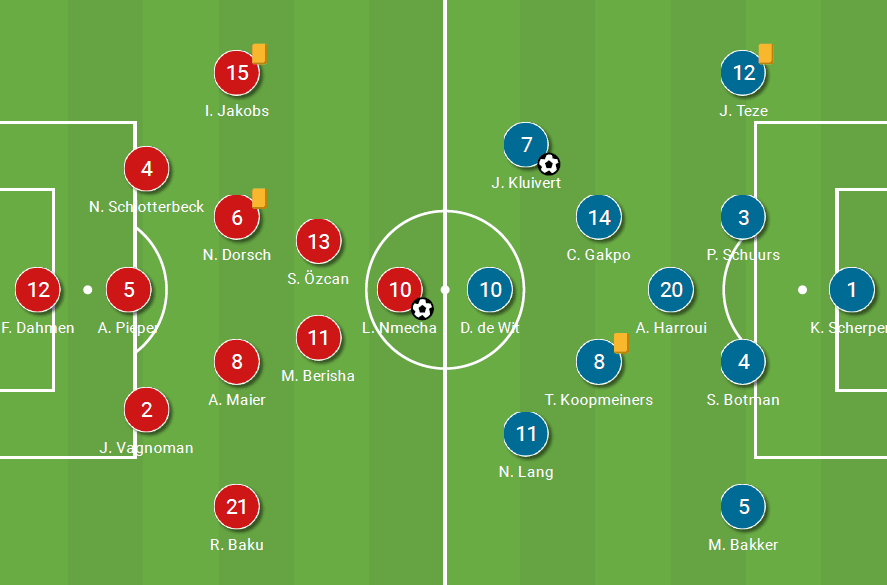
Netherlands’ change of shape
The Netherlands went out with a 4-2-2-2 with possession. Despite the formation change, the principles were still the same as when they used a 4-3-3. The two centre-backs were used as the starting men in their build-up phase. While Germany left just one striker to press the two centre-backs about which we will discuss in the next section. To proceed to the middle-third, Netherlands couldn’t directly have access to their central midfielders. Both of them were tightly marked by the German players.

We can see both the striker as well as the CAM in close range to Koopmeiners as Botman cannot play a straight pass to him to move the ball. But the Netherlands were still able to access him by using the 3rd man. The 3rd man would be the full-back. Germany didn’t press the full-back intensely as they left him free so that they would press once the ball moved to him. The Netherlands used this to good effect as they formed a triangle often between the centre-back, full-back and defensive midfielder. When the ball went to the full-back, Berisha now had to change his orientation and press the centre-back as he came forward. Botman now immediately played the ball to Bakker. This meant that the lane to Koopmeiners was open and the pass to him from full-back can be easily played.

The two wide midfielders in their setup came central and were concentrated around the half-space. This meant that the two German pivots had to man-mark them and they weren’t in a position to afford the space. The centre-forwards occupied the entire German backline. This left the space in the wide areas open and that could be used by the Dutch full-backs.

When the ball is in the flank, the flank near German players would move wide and ensure that they compress the space in that flank. This would mean the whole German team have to shift and orient accordingly. Space was then created in the opposite flank because of this.
Another interesting setup was how the two Dutch forwards positioned themselves. While De Wit would drop like an actual number 10, Kluivert would stay high to create the depth required by a team in possession. This particular strategy proved a very handful for the Germans as they often found it difficult to manage. When De Wit dropped, he would do that close to the right-sided German pivot who was already marking Noa Lang. This way they were able to create a 2v1 against the CDM and Maier had two players to mark. The centre-back cannot afford to step out and mark De Wit as that would create a space in the centre and with Kluivert hanging around the shoulder of the other centre-back he could exploit that with a run and his skills.
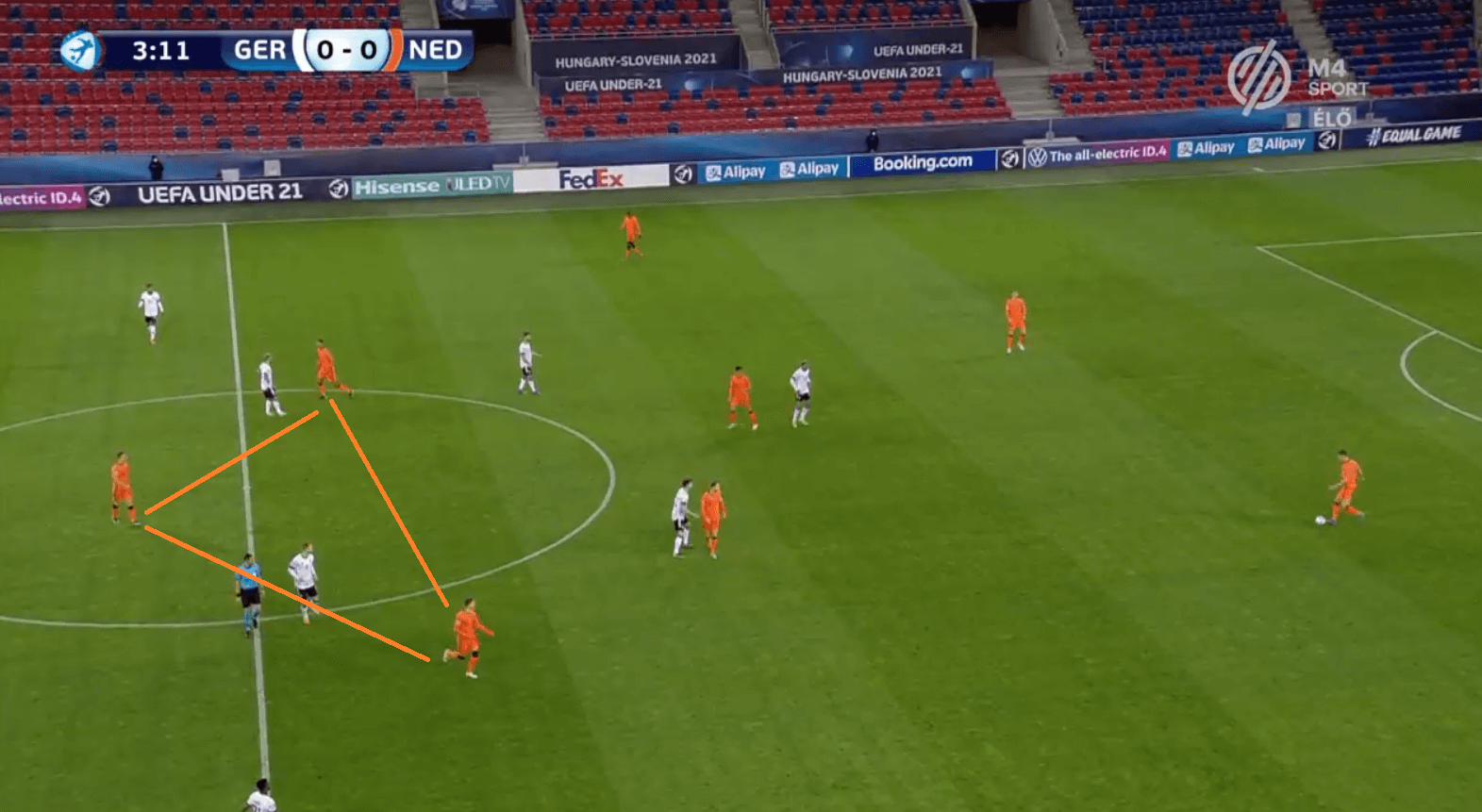
Both Lang and Gakpo would start central and would look to attract the German defensive midfielders. Then they would start moving wide and drag the pivots to them. This would create a huge distance between the two pivots which is pretty much unfeasible in a 4-2-3-1 and something that should not happen. De Wit would then drop into space in between the space between them and receive the ball. We can see an example of this in the image below where there is too much distance now between the defensive midfielders and the centre-backs are not shielded in front of the defence.
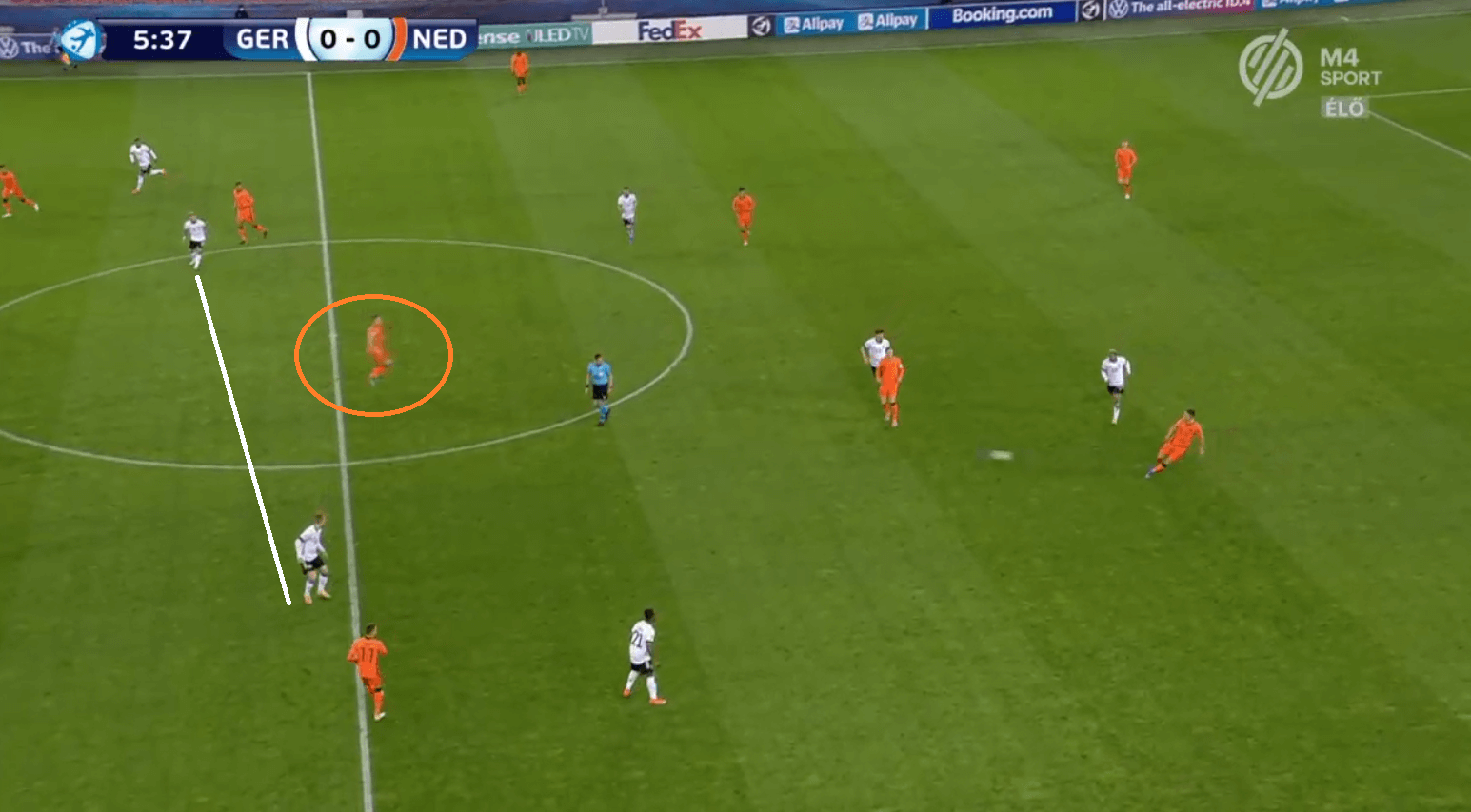
Opposite movements would also be used to drag defenders away from their position and another player would make runs into that space created. An example of that can be seen in the image below where Kluivert drops deep after staying close to the centre-back. The centre-back would follow him and immediately Teze would make a run into that space and exploit the high defensive line.
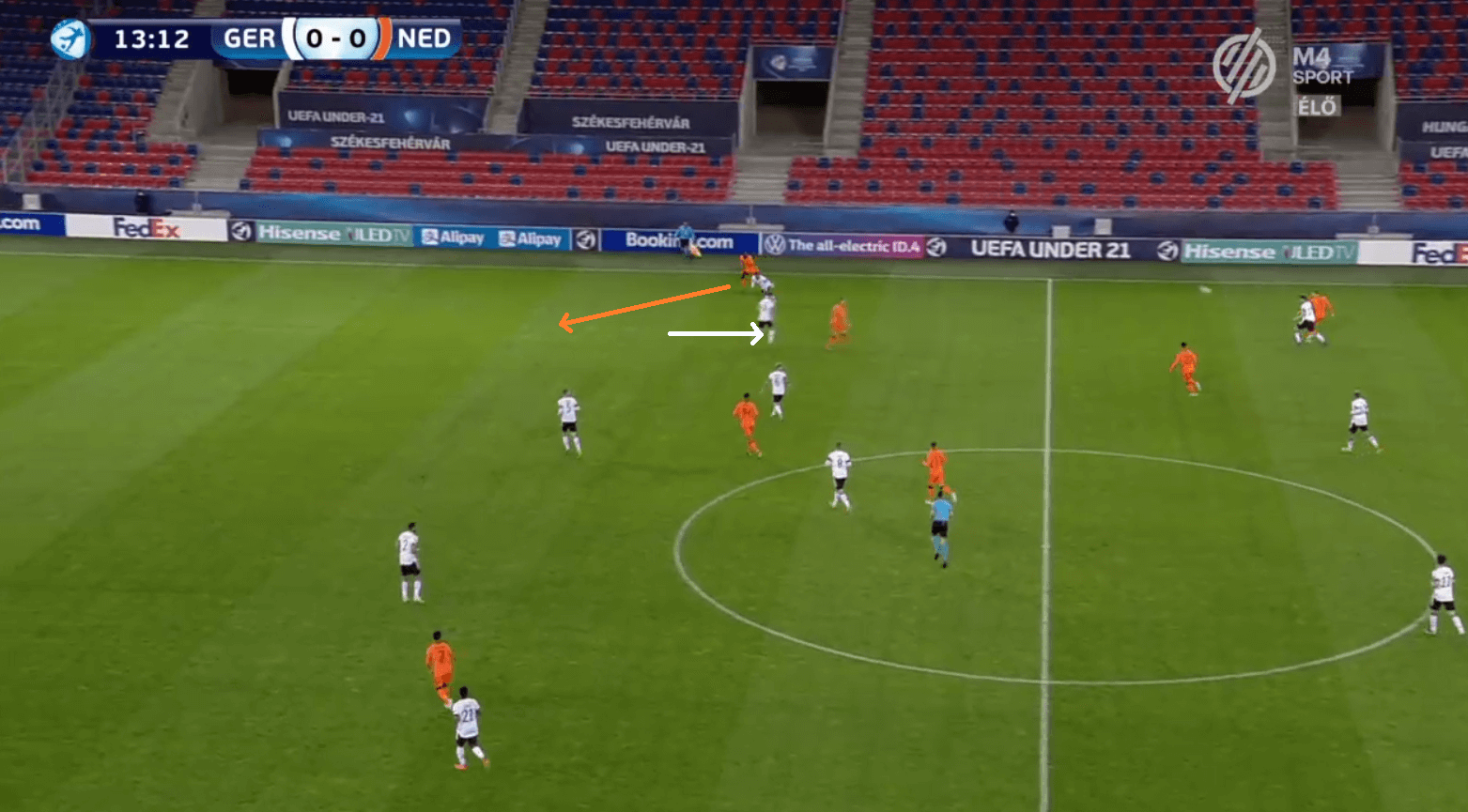
Germany’s 3-man backline provides additional security
Germany kept a 4-2-3-1 higher up the pitch formation without the ball and shifted back to a 3-4-3 in their own half in a low-block. Having one centre-forward meant that the Netherlands need not have to commit another player to the backline and they used 2 players to build. Germany didn’t have much concern about that. When one of the centre-backs received the ball, the striker would press the centre-back in such a way that the passing lane to his partner is closed and they cannot immediately access their player. We can see an example of that in the image below. Nmecha presses Botman by cover-shadowing the other centre-back. Berisha keeps a close eye on Koopmeiners and looks to mark him so that the ball does not land on his feet.

Notice the positions of the wingers here and look how central they are. Germany were looking to prioritize by blocking the central passing options. Another strategy here is to bait the Dutch centre-backs to pass the ball out wide and here Germany will press quickly to win the ball back with the touchline acting as another defender. When the ball was moved to the flanks like we have mentioned before the German players moved and position accordingly. This meant that the far-side German winger would now move into that side full-back position as the full-back would have moved inward to cover the centre-back.

We mentioned that space was available in the far flank. That was made possible by this adjustment from the Germans as they wanted to overload the near flank and win the ball as fast as possible.
Despite so many patterns used by the Dutch to penetrate the defence, the German themselves were good strategically in their defensive setup and ensured that the Dutch cannot access the necessary players easily. The main intention for Germany was to block the central options and they did that effectively. The small decisions that they took here and there in the match proved very effective. Their body orientation, the right time to press and the intensity were mostly on point. In the example below, we can see how Germany have quickly formed a 4v3 situation with no possible passing options.
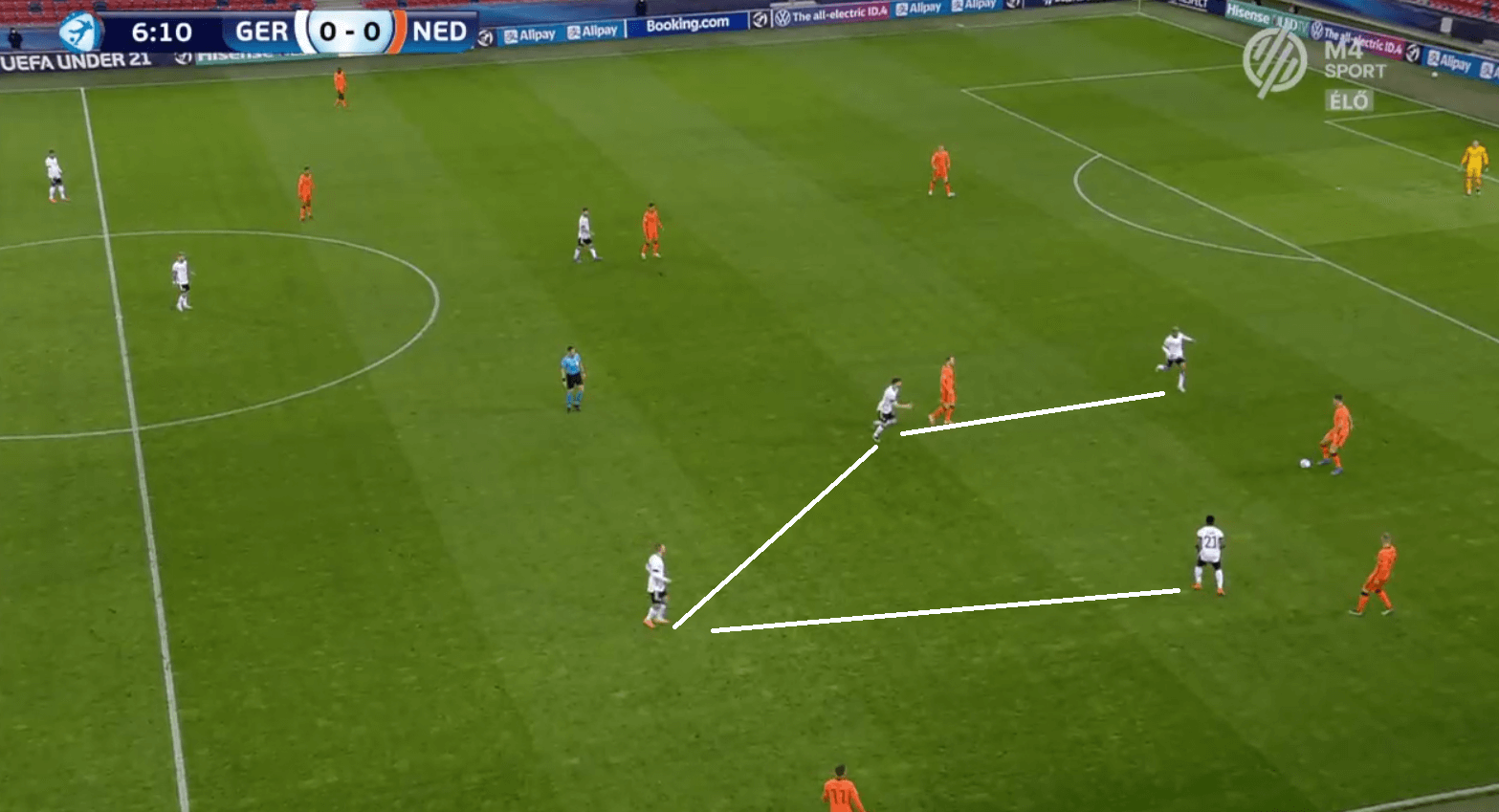
Germany’s attack against Netherlands zonal defending
With the ball, Germany lined up in a 3-4-2-1 system that saw their wingers start extremely narrow and wing-backs staying wide and providing width. We can see that in the example below.
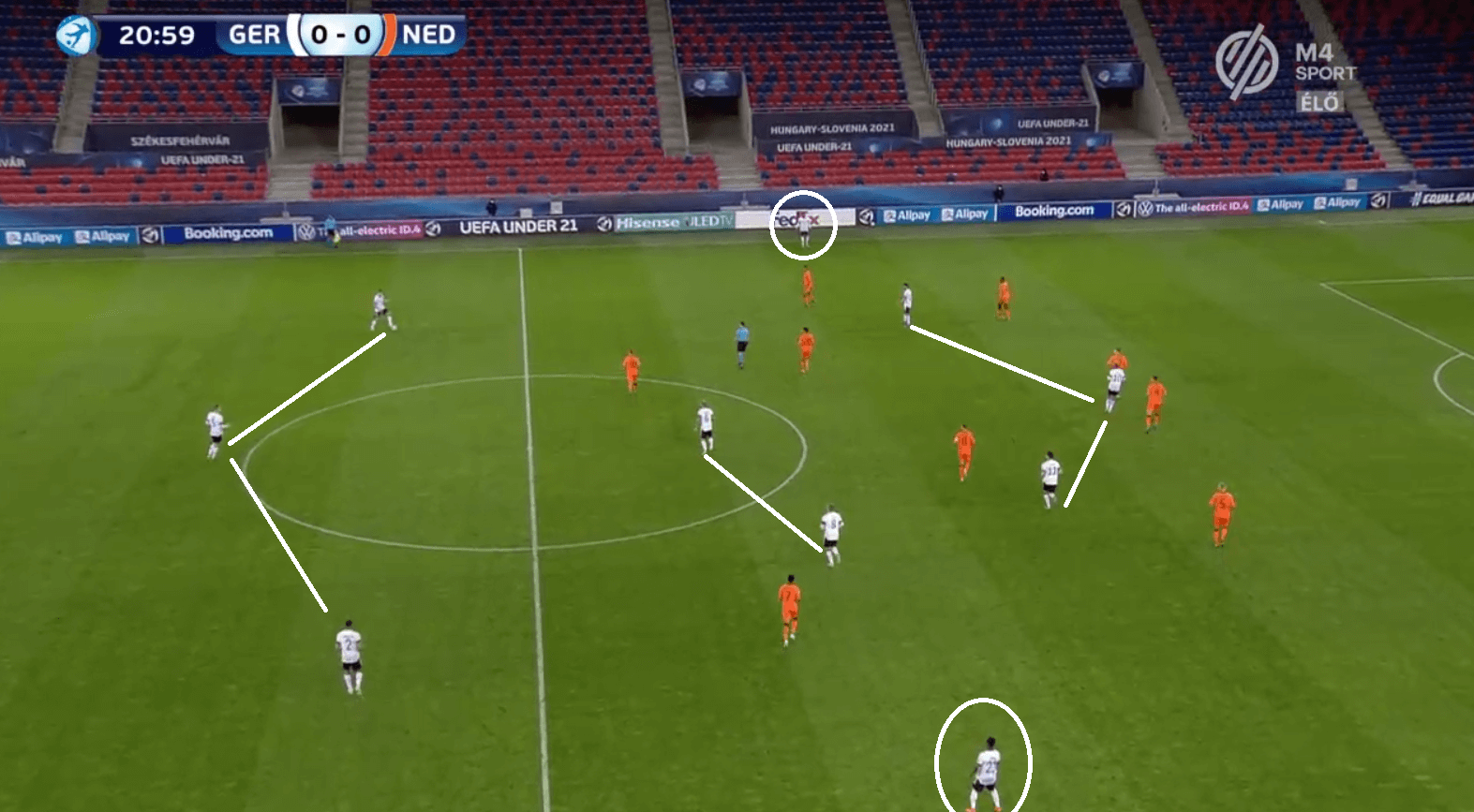
Germany would generally shift the ball to the flanks and would look to play the ball over the defence to the near side winger making a run in behind the defence. This way they would look to stretch the opposition, and get into these positions from where Germany look to play cut-backs.
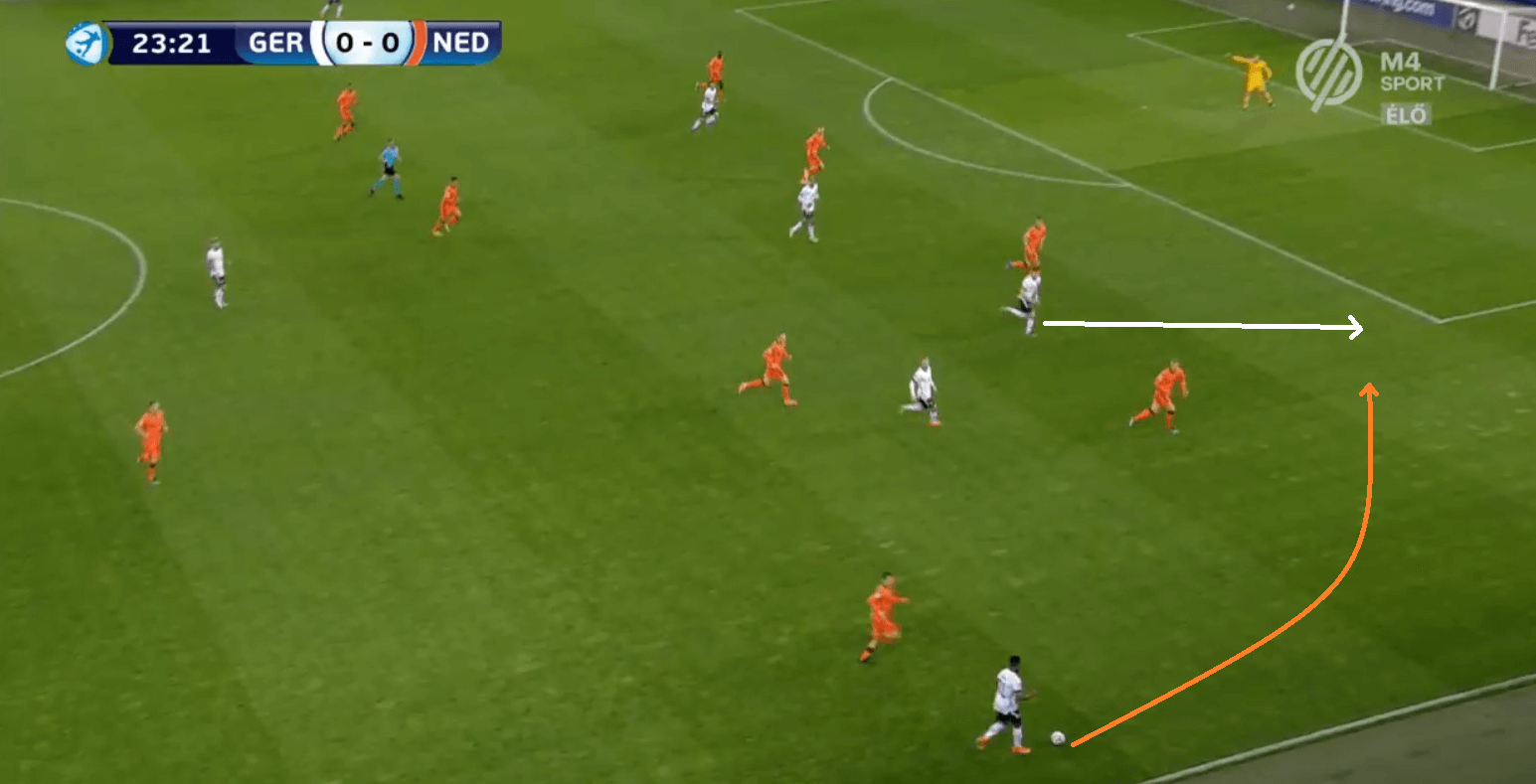
Their late equalizer came with a similar pattern as substitute Burkardt was played with a similar ball by the wing-back and he then made a cut-back to Nmecha, as the Manchester City loanee just had to tap it into the goal.
The Netherlands pressed higher up the pitch and comparatively pressed with a much better intensity when compared to Germany. When the ball is played to one of the centre-backs they would immediately start pressing in a man-man fashion in the ball near the flank and would look to force the German to make a mistake or go long.

In the mid-block, they went with a 4-2-3-1 system where one of the central defensive midfielders pushed high up to press one German defensive midfielder. While the other German midfielder was man-marked by the CAM. They would take the players based on the flanks with the other Dutch midfielder pushing higher up this time to mark.
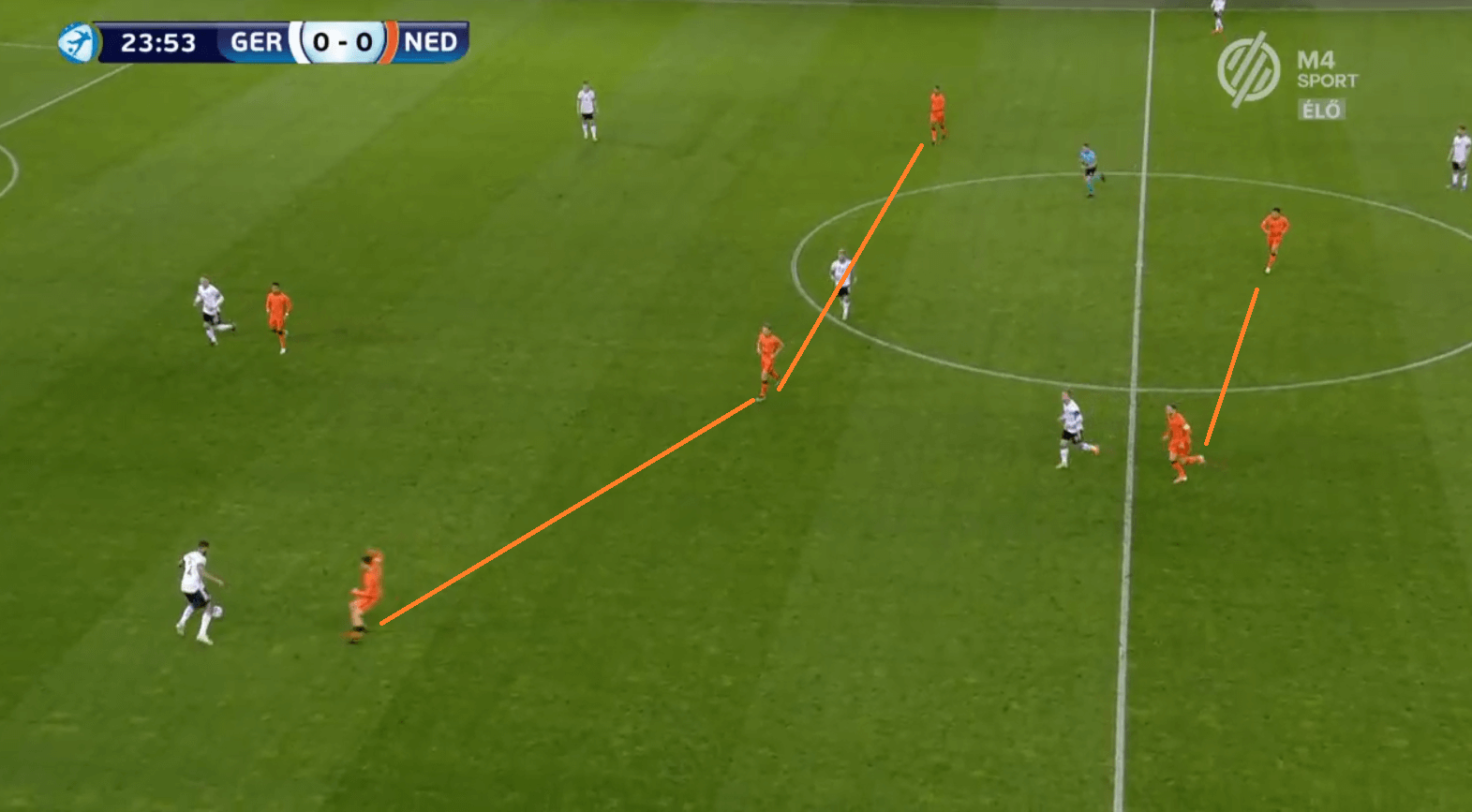
Their zonal defending can be seen below in the image as we can see that Germany were offered very few central spaces and the whole Dutch players were there to orient themselves very closely. This although did give Germany the advantage of playing to their wing-backs and use them to progress, the Dutch defenders did the hard-work to ensure that they did not create many issues from these regions.
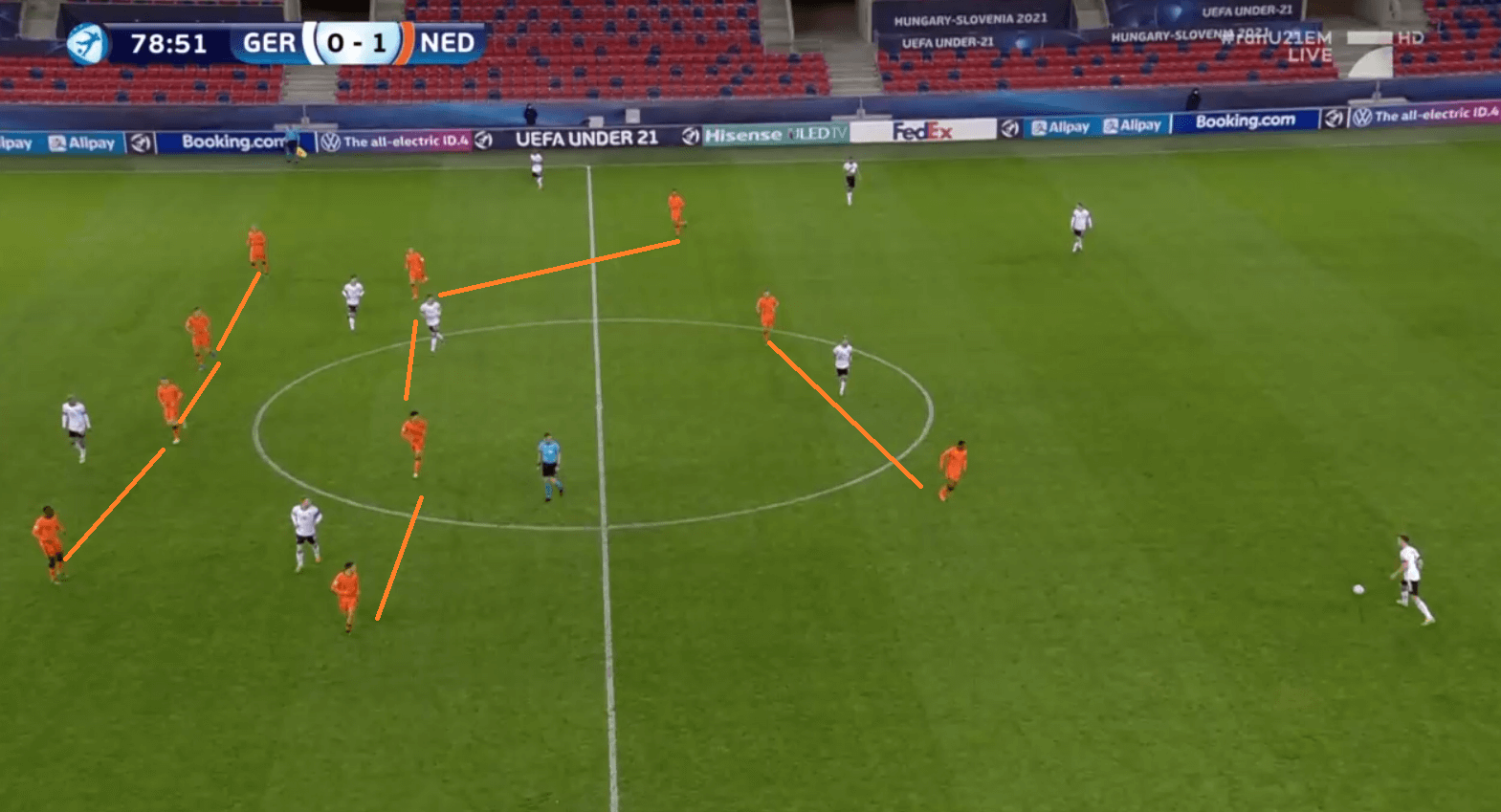
Conclusion
Despite the result, Germany retained its position as the group leaders with 4 points and a better goal difference than second-place Romania. Netherlands’ second draw in 3 days means they now sit at 3rd position, 2 points behind them. If they win their final game comfortably, then irrespective of the other match, they will make it into the quarter-finals stage while a loss would knock them out at the earliest stage.






Comments